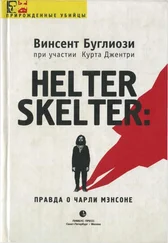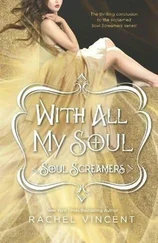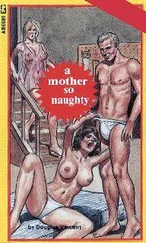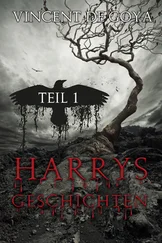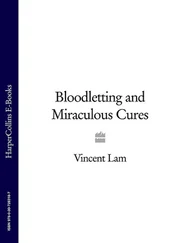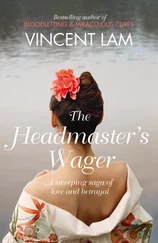If I cross-examined too strenuously, it would appear that I did not feel that we had proven our case. If I eschewed cross-examination, there was the possibility of leaving a lingering doubt as to guilt, which, when it came time for their deliberations, could influence the jury’s vote on penalty. Therefore I had to proceed very carefully, as if trying to walk between raindrops.
The defense, and specifically Irving Kanarek, had tried to plant such a doubt by providing an alternative to Helter Skelter—the copycat motive. Though I felt the testimony on this was thoroughly unconvincing, this didn’t mean I could sit back and presume the jury would feel as I did.
As an explanation for why she was lying to save him, it was important that I conclusively prove to the jury Susan Atkins’ total commitment to Manson. At the start of my cross-examination I asked her: “Sadie, do you believe Charles Manson is the second coming of Christ?”
A.“Vince, I have seen Christ in so many people in the last four or five years, it is hard for me to say which one exactly is the second coming of Christ.”
I repeated the question.
A.“I have thought about it. I have thought about it quite a bit…I have entertained the thought that he was Christ, yes…I don’t know. Could be. If he is, wow, my goodness!”
After confronting her with her letter to Ronnie Howard, in which she stated, “If you can believe in the second coming of Christ, M is he who has come to save,” I asked her: “Even now on the witness stand, Sadie, you think that maybe Charles Manson, the man over there who is playing with his hair, might be Jesus Christ?”
A.“Maybe. I will leave it at that. Maybe yes. Maybe no.”
I persisted until Susan admitted: “He represented a God to me that was so beautiful that I’d do anything for him.”
Q.“Even commit murder?” I asked instantly.
A.“I’d do anything for God.”
Q.“Including murder?” I pressed.
A.“That’s right. If I believed it was right.”
Q.“And you murdered the five people at the Tate residence for your God, Manson, didn’t you?”
Susan paused, then said: “I murdered them for my God Bobby Beausoleil.”
Q.“Oh, so you have two Gods?”
Evasively she replied: “There is only one God and God is in all.”
Since Susan had now testified to these matters, the prosecution was able to use her prior inconsistent statements—including her grand jury testimony—for impeachment purposes.
On cross-examination I had Susan repeat the alleged reasons why they went to the Tate residence. Once she’d restated the copycat nonsense, I hit her with her statements regarding Helter Skelter’s being the motive—made to me, to the grand jury, and in the Howard letter.
I also brought out that she had told me, and the grand jury, that Manson had ordered the seven Tate-LaBianca murders; that Charlie had directed all their activities the second night; and that none of them had been on drugs either night.
I then led her back through her scenario of the Hinman, Tate, and LaBianca murders, step by step, knowing she would slip up, which she did, repeatedly.
For example, I asked: “Where was Charles Manson when you stabbed Gary Hinman to death?”
A.“He left. He left right after he cut Gary’s ear.” Having inadvertently admitted this, she quickly added that she had tried to sew up Hinman’s ear.
I then took her back again: Hinman drew a gun on Manson; Manson ran; Hinman started to shoot Manson; to protect her love, she stabbed Hinman to death. Just when, I asked, did she have time to play Florence Nightingale?
Susan further claimed that she didn’t tell Manson that she had killed Hinman until after their arrest in the Barker raid. In other words, though she had lived with Manson from July to October 1969, she hadn’t got around to mentioning this? “That’s right.” Why? “Because he never asked.”
She hadn’t even told him she committed the Tate and LaBianca murders, she claimed. Nor, until two days ago, had she told anyone that Linda Kasabian masterminded the murders.
Q.“Between August 9, 1969, and February 9, 1971, how come you never told anyone that Linda was behind these murders?”
A.“Because I didn’t. It’s that simple.”
Q.“Did you tell anyone in the Family that you committed all these murders?”
A.“No.”
Q.“If you told outsiders like Ronnie Howard and Virginia Graham, how come you didn’t tell members of your own Family, Sadie?”
A.“Nothing needed to be said. What I did was what I did with those people, and that is what I did.”
Q.“Just one of those things, seven dead bodies?”
A.“No big thing.”
I paused to let this incredible statement sink in before asking: “So killing seven people is just business as usual, no big deal, is that right, Sadie?”
A.“It wasn’t at the time. It was just there to do.”
I asked her how she felt about the victims. She reponded, “They didn’t even look like people…I didn’t relate to Sharon Tate as being anything but a store mannequin.”
Q.“You have never heard a store mannequin talk, have you, Sadie?”
A.“No, sir. But she just sounded like an IBM machine…She kept begging and pleading and pleading and begging, and I got sick of listening to her, so I stabbed her.”
Q.“And the more she screamed, the more you stabbed, Sadie?”
A.“Yes. So?”
Q.“And you looked at her and you said, ‘Look, bitch, I have no mercy for you.’ Is that right, Sadie?”
A.“That’s right. That’s what I said then.”
BUGLIOSI“No further questions.”
On Tuesday, February 16, after lengthy discussions in chambers, Judge Older told the jury that he had decided to end the sequestration.
Their surprise and elation were obvious. They had been locked up for over eight months, the longest sequestration of any jury in American history.
Though I remained worried about possible harassment from the Family, most of the other reasons for the sequestration—such as mention of the Hinman murder, Susan Atkins’ confession in the Los Angeles Times, her grand jury testimony, and so on—no longer existed, since the jury heard this evidence when Sadie and the others took the stand.
It was almost as if we had a new jury. When the twelve entered the box the next day, there were smiles on all their faces. I couldn’t remember when I’d last seen them smiling.
The smiles would not remain there long. Patricia Krenwinkel now took the stand, to confess her part in the Tate and LaBianca homicides.
An even more improbable witness than Susan Atkins, her testimony regarding the copycat motive was vague, nebulous, and almost devoid of supporting detail. The point in her taking the stand was to take the focus off Manson. Instead, like the other Family members who had preceded her, she repeatedly highlighted his importance. For example, describing life at Spahn Ranch, she said: “We were just like wood nymphs and wood creatures. We would run through the woods with flowers in our hair, and Charlie would have a small flute…”
On the murder of Abigail Folger: “And I had a knife in my hands, and she took off running, and she ran—she ran out through the back door, one I never even touched, I mean, nobody got fingerprints because I never touched that door…and I stabbed her and I kept stabbing her.”
Читать дальше

